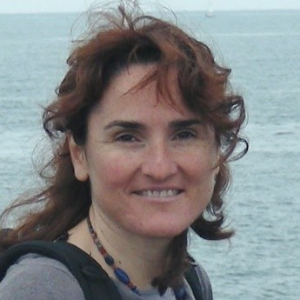Title : Combining electron channeling contrast and energy selected backscattered electron imaging to identifying defects in complex quantum dots systems
Abstract:
The microstructural characterization of semiconducting materials is essential to understand their physical properties, as well as device performance in various applications. Among the different techniques available, transmission electron microscopy (TEM) has been widely used for decades to reveal the defects in materials at nanoscale resolution. However, TEM has some limitations, such as the need for thin specimens, the difficulty of sample preparation, and the very small sample explored. Therefore, alternative or complementary techniques have been developed to overcome these challenges and provide more information about the materials of interest. One of these techniques is electron channelling contrast imaging (ECCI), which is based on the use of a scanning electron microscope (SEM) and a backscattered electron detector. ECCI exploits the phenomenon of electron channelling, which occurs when the incident electron beam is aligned with a crystallographic direction of the sample, resulting in enhanced or reduced backscattering depending on the orientation, and defect density, of the material. ECCI can provide high-resolution images of the surface and subsurface defects of materials, such as dislocations, stacking faults, and nano-motifs such as quantum dots, without the need for thinning or special sample preparation. For this reason, ECCI imaging of many heteroepitaxial structures has been reported, including subsurface quantum dots (QDs). However, the interpretation of image contrast can be hindered if an additional dot layer is deposited on the capping layer (CL) surface.
In this work, we present a novel approach to the study of defects and composition of InAs/GaAsBi QDs grown on GaAs substrates by means of two complementary scanning electron microscopy techniques: ECCI, using high primary beam energy (20 keV); and energy selective backscattered (EsB) electron detector imaging at low beam energies (2 keV). The latter enables a high sensitivity to small compositional changes and surface-sensitive spatial resolution. We obtain a comprehensive picture of the defect and compositional features of QDs and their correlation with growth conditions by combining both techniques. We demonstrate the effectiveness of our methodology by analysing different types of QD architectures where we implement GaAsBi capping of InAs QDs with different growth pauses.
We show that the wise use of both techniques and the subtraction of low voltage EsB in ECCI image allows us to enhance the contrast and visibility of the features. Results reveal the differences in defect types and distribution among the QD systems, as well as the variations in surface QD size, shape and/or the presence of Bi droplets. Our work provides a powerful tool for investigating and optimizing QD structures for various applications.
Audience Take Away:
- To know advantages of ECCI in terms of ease of use and reliable of the information obtained
- Recognize opportunities of combine EECI and EsB techniques can be an advance in the study of more complex heteroepitaxial systems
- To have knowledge of optimum parameters to enable reliable results
- To know the effect of growth interruption approaches in the formation of InAs/GaAsBi quantum dots



